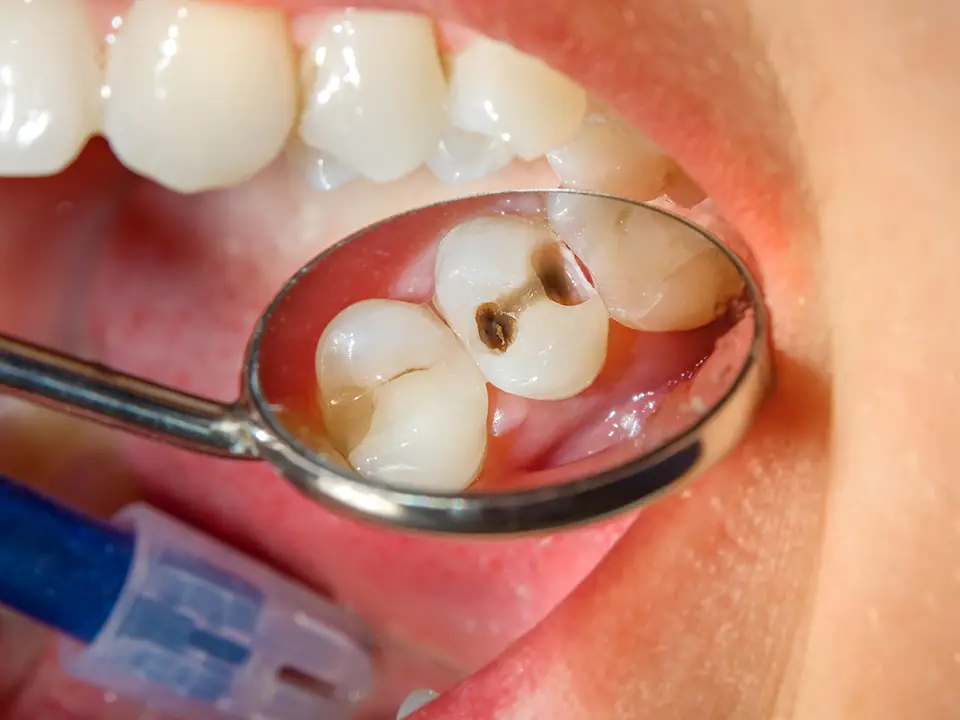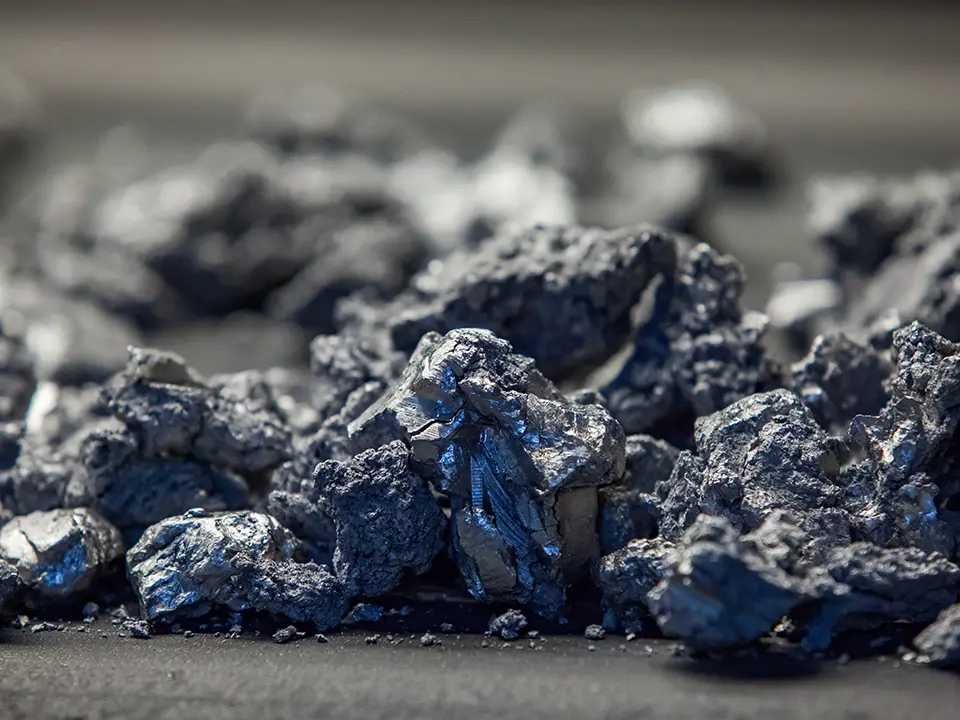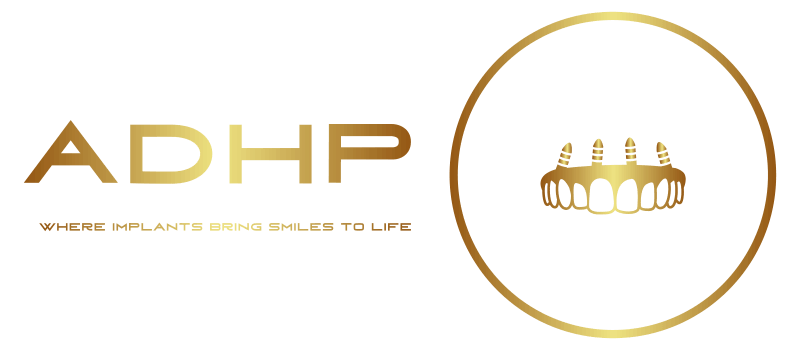The Cost of Dental Implants in Los Angeles

Are You in Need of a Dental Implant in the City of Los Angeles? Finding a dental implant specialist is easy, but picking one that is affordable can be a little tricky. With this guide I want to give you the information you need to get the best deal for less on dental implants in the city of Los Angeles. To help you out, I compiled a complete price list for low cost dental implants in Los Angeles, with prices ranging from as low as up to $3500. This guide is packed with tons of information about dental implants. When you walk into a consultation, you want to surprise the dentist with how smart you are! Use this guide as a resource, and you will find all the answers you need and what questions you need to ask in pursuit of finding the most affordable dental implants in Los Angeles! Dental Implant Guide Breaking Down a Dental Implant Finding Your Dental Implant Specialist The Price of Dental Implants in Los Angeles Take the Next Step Breaking Down a Dental Implant One of the key pieces of information you need to know is that a dental implant is NOT one piece! In fact dental implants consist of three parts – the implant, the abutment, and the crown. Here they are broken down: Implant – A threaded post that is gently screwed into your jawbone. Its primary function is to act as a tooth’s root and keep the rest of the implant permanently secure. Abutment – This small connector piece is what bridges the implant laying underneath the gumline to the crown. Crown – The outermost part of a dental implant. This is the only part that is visible. Custom made, it functions exactly like a natural tooth, and is aesthetically appealing. Whether you are living in Los Angeles, or any other city, you should always call the dental implant specialist and make sure that their pricing is for a COMPLETE dental implant. Some dentist appear to have remarkably cheap dental implants, but that is only because they display the price for only the implant post, which does not include pricing for the abutment and crown. Unless you ask them, they may not disclose that information to you until AFTER you start the dental implant procedure with them. Finding Your Dental Implant Specialist There are many factors to consider when finding a dental implant specialist. Understand that getting a dental implant in Los Angeles is much like buying a new car. Do you want a run down, bruised and scratched car that will barely get 50 miles down the road without breaking down? No you don’t. You want a car that is fully functional, that looks awesome, has great mileage, and above all is affordable. Use the same thought process when searching for an implant specialist. You want to go a professional in Los Angeles that is certified, experienced, uses only the latest technology and best materials, and offers inexpensive dental implants. There are 3 factors you should consider when choosing a dental implant specialist – their history, their equipment and their cost for dental implants. Dive into their Education and Experience I want to be able to trust a dentist so I can feel safe and relaxed throughout the entire dental implant procedure. I would not want to be on the news for having my entire teeth taken out by a fake dentist. Therefore I would look into the dentist’s education and experience. Check out where they graduated. Look into what they have achieved. Most of the time, a dentist will have an entire page on their website bragging about their accomplishments in the field. Also take note of whether the dental implant specialist is or is not in the office. Many places offer dental implant services, but oftentimes outsource you to another private dentist to get your work done. It is a must to make sure you know and trust the professional who will be working with your teeth. Get Only the Best Dental Implants It’s great to be confident in the dentist that you choose, knowing they have the credentials and experience, but are they the best? Take a little time to look at what type of implants they offer. Dental implants come in many different compositions, and it is important that you only get the best one. Cheap dental implants sounds nice, but usually a price too good to be true should set off red warning lights in your head. ‘Clone implants’ is a term used for implants that are generations behind in research and are poorly developed. Many ‘clone implant’ manufacturers just spit them out, not caring for the quality or health hazards they may be. Surely no one would get a poorly researched dental implant placed right? Wrong. There are over 4 million people living in Los Angeles, and there are billboard advertisements hanging all over the freeways showing off $399 Implants. There will be an unlucky few that will consider $399 implants to be a deal breaker, and call in to schedule immediately. However, not only are they being ripped off by getting a ‘clone implant’, they are also paying only for only the implant post. Make sure that the dentist you are looking at is giving you the best care and service. Look at whether they use titanium implants, the best material for bonding to your jawbone through osseointegration. Though they are more expensive for the dentist and for you, they have an exponentially higher success rate and are the safest option. Find Out How Much You Will Be Spending You may not getting the cheapest dental implants in Los Angeles, but you will find low cost dental implants nonetheless. Below, I will go further into detail about the cost of dental implants in the city of Los Angeles, and how they directly compare to one another. The Price of Dental Implants in Los Angeles I have been in the field for many
How to Help Your Kids Have Beautiful Teeth when They Grow Up

Summary: Dental health is important for children to know about at an early age, some dentists say. Children usually start brushing their teeth unsupervised around the ages of 6 or 7; however, if they have not been taught the proper ways about oral health they may not be taking good care of their dental health. Taking your child to visit the dentist early could help them prepare for when they start taking care of their teeth on their own. Dr. Jennifer Creem of Core Pediatric Dentistry states that children should learn about dental health as early as the age of 1. As children get older their baby teeth fall out and adult teeth come in; to make sure that children take extra good care of their adult, permanent, teeth dentists recommend taking them to the dentist for a oral health learning visit. This will help them as they grow older and could save them their dental health. Original Article: Brace yourself for a life of good oral health PORTSMOUTH — It really is true that teaching children good habits when it comes to taking care of their teeth can result in a lifetime of good oral health and a beautiful smile. It begins early. Dr. Jennifer Creem of Core Pediatric Dentistry in Exeter said they recommend children begin learning about proper dental care and cavity prevention when they are 1. “The job of baby teeth is to hold the space for adult teeth,” Creem said. “When we see them, we evaluate the growth and development. As they grow up, we are looking at the teeth and the facial profile. We are looking at how the jaw comes together.” Caring for baby teeth means teaching them how to brush. With very young children, Creem said, they teach the parents how to brush their child’s teeth. “Children can start brushing their own teeth, with supervision, when they are 6 or 7,” Creem said. “We recommend a smear of fluoridated toothpaste. Brush twice a day and we teach them to use floss and fluoride rinses. We use sealants on the molars to prevent decay.” Diet is important in good teeth health. “We talk about the frequency of sugar on the teeth,” Creem said. “In between meals, we recommend kids drink water instead of sweetened beverages because the longer sugar sits on the teeth the greater the risk for damage.” Eventually baby teeth fall out to make room for adult, or permanent, teeth. The problem is that often the new, larger teeth do not grow in at the right angle. They can be crooked, rotated, twisted or they can overlap. Some mouths are too small and the new teeth are crowded. Sometimes the upper and lower jaws are not the same size, which can result in an underbite or an overbite, also called a malocclusion. Creem said often these problems can be identified in children as young as 6 or 7 years old. “All permanent teeth are usually in by the time a child is 12,” Creem said. “Unless the mouth problems are severe, we usually wait until then to address it. If they need intervention sooner there are steps that can be taken earlier.” Dr. Brad Watterworth, a board-certified orthodontist in Portsmouth, advises that all children, by age 6 or 7, be screened by an orthodontist, in order to pre-emptively address some issues. “It’s best to make a long-range plan earlier than later,” Watterworth said. “Problems can arise that need to be corrected early, like cross bites or severe crowding. Some problems can wait until they are 10 to 13, but others should be addressed right away, to make less problems when it comes time for orthodontics.” Eventually, some children require braces. The determination is made by taking X-rays and through a clinical exam, Watterworth said. “Many children will have missing teeth or extra teeth,” he said. “In some cases, teeth may need to be removed to make room. In the case of missing teeth, or gaps, orthodontia or implants can sometimes help close the spaces. The combinations are endless so the child really needs to be seen as early as possible. An experienced orthodontist can see developmental problems that might not be otherwise apparent through normal dental exams.” Today’s kids have a wide variety of choices when it comes to braces. They can be metal, clear or ceramic. They come in myriad colors so children today do not look at braces as the stigma they were in their parents’ age. “Invisalign braces have been recommended more for older people,” Creem said. “There is now Invisalign Teen, but I still would not recommend them for very young children.” Watterworth agreed that Invisalign is usually not appropriate for young children. “The results are not as predictable and the amount of cooperation needed make it expensive,” he said. “The best choice are small metal braces. They are more durable and easier to keep clean.” Depending on the mouth issue, braces are usually worn anywhere from six months to two years. Once the braces are removed, retainers are used to assure the teeth do not revert back to their original locations and that they continue settling into their corrected positions. Retainers are usually worn for a few months to a year or more. Insurance, if there is an orthodontic rider, can help defray some of the cost. “However, the rate is usually $1,000 to $2,000 per person, per lifetime,” Watterworth said. “That’s the same amount as when I started 30 years ago. Back then it was something, but the insurance has not kept up with the cost. An average price is $5,000 to $5,500 now.” Because of this, some orthodontists do have payment plans. And Watterworth said most do not charge at all for the initial screening visit. In order to assure a healthy start, Creem said children should see their dentist at least twice a year, even if no problems are found. Source: http://www.seacoastonline.com/articles/20140817-LIFE-408170317 Disclaimer: This article was shared for informational purposes only. ADHP
Fad Diets can be Bad for Your Teeth

Summary: We’ve all seen the many celebrity fad diets out there ranging from drinking nothing but juice to eating as much meat as you can stomach. While these diets can quickly and drastically cause you to drop lots of weight, they could be damaging your teeth in the processes. For example, a diet that has you drinking lots of concentrated juices could increase your chances of cavities which could lead to tooth loss and the need of dental implants. To combat this, it’s best if you drink your juice from a straw so the sugars bypass your teeth. The health of your teeth is just important as controlling your weight. The article below has some great examples and solutions to some of the newest fad diets. Orignal Article: These Are The Foods That Could Be Damaging Your Teeth The Huffington Post UK If you’ve yet to start your bid for that perfect beach body this summer, take note: fad diets could damage your teeth. So while the raw food diet and a low-carb plan may promise glossy hair, energy boosts, and weight losIf you’ve yet to start your bid for that perfect beach body this summer, take note: fad diets could damage your teeth. So while the raw food diet and a low-carb plan may promise glossy hair, energy boosts, and weight loss, a new report from Dr Sameer Patel, clinical director at dental and orthodontic practice, elleven, reveals the diets du jour could play havoc with your oral health. While celebrities including Rosie Huntington Whitely and Jessica Alba have attributed their physiques to the juice diet, following this low calorie diet could be affecting your gums, the enamel of your teeth and causing cavities. Fruit and vegetables contain healthy acids, but this is only the case if they are eaten as a whole, rather than as a concentrated juice, while their natural sugar and fructose is a common cause of cavities. So, if you’re following the juice cleanse, make sure you drink through a straw. The 5:2 diet and low-carb, high protein plan may have proved popular with Beyonce and supermodel Miranda Kerr, but Dr Patel has warned that it can cause bad breath – and no amount of flossing and brushing will combat the smell. So, think twice before cutting out the carbs completely. While mixing sachets of powder into milkshakes may have had an image problem in the past, they have recently grown in popularity. However, the high sugar content can result in tooth delay and cavities. If you are going to try this diet, try rinsing your mouth with water afterwards or chewing some sugar-free gum. Similarly, meal replacements tend to Taking out the fat and replacing it with extra sugar and salt (to boost flavour) can be extremely damaging to your teeth and lead to tooth decay. Try cooking low calorie meals from scratch or swapping your coffee for a cup of green tea to control inflammation and fight bacterial infection. Although sticking to raw foods such as fruits, vegetables, nuts and seeds sounds like the healthiest option, even natural sugars can cause cavities. Nuts and seeds can also get stuck between teeth, making it easier for bacteria to build up. Try flossing or chewing sugar-free gum. While celebrities including Rosie Huntington Whitely and Jessica Alba have attributed their physiques to the juice diet, following this low calorie diet could be affecting your gums, the enamel of your teeth and causing cavities. Fruit and vegetables contain healthy acids, but this is only the case if they are eaten as a whole, rather than as a concentrated juice, while their natural sugar and fructose is a common cause of cavities. So, if you’re following the juice cleanse, make sure you drink through a straw. The 5:2 diet and low-carb, high protein plan may have proved popular with Beyonce and supermodel Miranda Kerr, but Dr Patel has warned that it can cause bad breath – and no amount of flossing and brushing will combat the smell. So, think twice before cutting out the carbs completely. While mixing sachets of powder into milkshakes may have had an image problem in the past, they have recently grown in popularity. However, the high sugar content can result in tooth delay and cavities. If you are going to try this diet, try rinsing your mouth with water afterwards or chewing some sugar-free gum. Similarly, meal replacements tend to Taking out the fat and replacing it with extra sugar and salt (to boost flavour) can be extremely damaging to your teeth and lead to tooth decay. Try cooking low calorie meals from scratch or swapping your coffee for a cup of green tea to control inflammation and fight bacterial infection. Although sticking to raw foods such as fruits, vegetables, nuts and seeds sounds like the healthiest option, even natural sugars can cause cavities. Nuts and seeds can also get stuck between teeth, making it easier for bacteria to build up. Try flossing or chewing sugar-free gum. Source: These Are The Foods That Could Be Damaging Your Teeth Disclaimer: This article was shared for informational purposes only. ADHP is not responsible for any claims, advice or errors that might exist in the articles. third party websites or analyses presented.
How Do You Get a Cavity?

Here’s an infographic with some information about how bacteria digests food particles stuck in your teeth and uses it to:
10 Interesting Facts About Titanium

Ever played a game of ‘Guess the Element’? Here’s a clue: it’s in your toothbrush, your laptop, and even rockets zooming into space. Yes, it’s titanium! This metal is like the Clark Kent of the material world – unassuming in daily life but a superhero in its capabilities. Join ADHP as we explore what titanium is, the uses of titanium, and facts about science and innovation. 10 Facts About Titanium Titanium’s Tale – From Obscurity to Ubiquity In the year 1791, nestled within the black sands of Cornwall, England, a clergyman and amateur geologist named William Gregor stumbled upon a metal ore unknown to science. This discovery, initially named menachanite, laid the foundation for what we now know as titanium. It wasn’t until 1795, under the gaze of German chemist Martin Heinrich Klaproth, that this element was christened ‘titanium’, in honor of the Titans of Greek mythology. The journey of titanium from Gregor’s initial discovery through various scientific advancements to its widespread use in the 20th century is a captivating narrative of scientific curiosity and industrial innovation. Initially perceived as a curiosity, titanium’s transformation into a highly sought-after metal reflects a journey paralleled by few other elements in the periodic table. The Unparalleled Properties of Titanium The real allure of titanium lies in its extraordinary properties. This metal boasts a strength comparable to steel yet weighs significantly less, a trait that has captured the attention of engineers and designers worldwide. But it’s not just the strength-to-weight ratio that makes titanium stand out; its exceptional resistance to corrosion gives it a lifespan that far surpasses that of many other metals. These properties open a world of possibilities where titanium can be utilized in environments that would quickly degrade lesser materials. The resilience and durability of titanium under extreme conditions have made it a material of choice in various industries, setting it apart as a true modern marvel. Everyone has a little bit of titanium inside of their bodies, and is found in our food as well. Titanium in Nature and the Human Body Enveloped in the earth’s crust and scattered across various parts of the world, titanium is not just an industrial wonder but a natural phenomenon. Beyond its geological presence, titanium plays a subtle yet vital role in the biological realm. It is estimated that the average human body contains about 20 milligrams of titanium, ingesting approximately 0.8 milligrams daily through various food sources. This trace presence, though seemingly insignificant, underscores titanium’s compatibility with life itself. In nature, titanium isn’t a lone ranger; it’s often found in minerals like ilmenite and rutile, painting a picture of a metal that is as much a part of the earth as it is of us. Titanium in Pop Culture and Media From the sleek exteriors of sci-fi spaceships to the durable gadgets of superheroes, titanium has carved a niche for itself in the realm of pop culture and media. This metal has become synonymous with strength, futurism, and cutting-edge technology, captivating audiences worldwide. Its portrayal in films, TV shows, and literature often reflects its real-world applications – indestructible, resilient, and ahead of its time. It even has its own song! Titanium’s allure in the media isn’t just about its physical properties; it’s about the ideas and possibilities it represents – a material that’s as boundless in potential as the imagination of the creators who celebrate it. Titanium in Architecture and Art Beyond its industrial and scientific applications, titanium’s influence extends into the realms of architecture and art, offering a fusion of strength and beauty. The gleaming façade of the Guggenheim Museum in Bilbao, Spain, is a testament to this, where titanium panels create a mesmerizing play of light and texture. In the hands of architects and artists, titanium becomes a medium of creative expression, enabling structures that are as aesthetically pleasing as they are functional. Its use in art installations and sculptures worldwide speaks volumes of its versatility, proving that titanium can be both a foundation of strength and a canvas for beauty. The entire outside of the Guggenheim Museum in Bilbao, Spain is composed of titanium panels. Titanium’s Role in the Aerospace Industry Soaring into the stratosphere, titanium proves to be an aerospace marvel. Its low density coupled with high strength makes it an ideal candidate for aircraft and spacecraft, where every gram matters. Titanium alloys are used in engines, airframes, and other critical components, providing the resilience needed to withstand extreme temperatures and pressures encountered in flight. This metal has not only enhanced the performance and safety of air travel but has also been instrumental in ambitious space missions, helping humanity reach for the stars. The trust placed in titanium in the aerospace industry is a testament to its reliability and the pivotal role it plays in advancing our exploration of the skies and beyond. Titanium in Medicine: A Lifesaver In the realm of medicine, titanium stands as a beacon of hope and innovation. Its biocompatibility – the ability to coexist harmoniously with the human body – makes it a preferred material for dental implants and prosthetics. From hip replacements to heart valves, titanium’s presence within the medical field has transformed countless lives. It’s not just about its physical properties; it’s about the new lease on life it provides to patients worldwide. The use of titanium in medical devices exemplifies the perfect harmony between human needs and material science, showcasing a synergy that continues to push the boundaries of medical possibilities. Titanium in Sports and Recreation The world of sports and recreation has been revolutionized by titanium, a metal that lends athletes and enthusiasts an unseen edge. In the realm of golf, titanium drivers have changed the game, allowing for longer and more accurate drives. Cyclists benefit from titanium’s strength and lightness, with frames that are both resilient and agile. Even in the world of high-performance racing, titanium components are prized for their ability to reduce weight while maintaining structural integrity. This metal isn’t just enhancing sports equipment; it’s elevating

